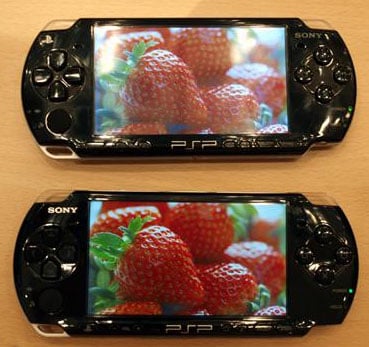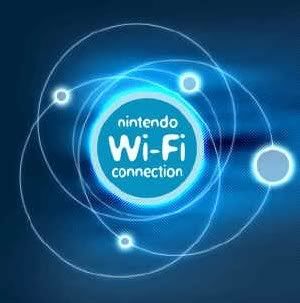
The PSP 3000 possesses slender dimensions (2.81 inches high by 6.63 inches wide by 0.63 inch deep) and lighter weight (just over 7 ounces--or two hundred grams--with the game disc, battery and Memory Stick on board) as its big brother.
The 4.3-inch LCD wide screen remains, and it is been fine-tuned. Sony states the brand-new screen now gives finer color reproduction, lower glare, and lower "ghosting" on high-motion pictures. If likened with the 2000, the PSP 3000 does, indeed, provide finer color vibrancy (you are able to toggle between "wide" and "standard" color in the selections to determine the difference). As for glare decrease: we did not find there to be a big difference. Do not expect to play in direct sunshine, for example. But you might get better luck with less distractions from interior lighting sources.
But in its effort to deal with the ghosting issue, Sony's remedy may have been less suitable than the disease. By raising the screen's refresh rate, the brand-new PSP appears to bring out an assortment of video artefacts onto the screen. They look as scanlines or jaggies, as though the picture is interlaced. They are more evident in high-motion pictures in games and videos--but that's many of the content on the PSP.
The silver variant of the PSP 3000 gives a matted finishing, as likened with the glowing forte-piano black finishing of the black one. As a result, the silver physical structure is resistant to fingermarks and smutches that so easily come out on the black variant. Regrettably, the LCD is very similar on both --shine and glossy --and it continues an attractor for fingermarks. As mentioned above, the deficiency of a clamshell figure (as found on the Nintendo DS) makes investment in a case as much a essential for the PSP as it is for an iPod or iPhone.
Other than some really insignificant aesthetical differences, key layout on the PSP 3000 is essentially very similar to the former PSP as well. The CRT screen is framed by controllers on its right,left, and bottom position, plus 2 shoulder keys along the top boundary. The key layout is grounded on the standard PlayStation controller layout--the four-way directional pad on the square, triangle,left, cross, and circle buttons on the right--so anybody who's employed a Sony console over the previous decade needs to be able to pick up and play. The bottom left of the front face also puts up an analog thumbstick, for more accurate movement. (A second thumbstick on the right, identical to the pattern of the PlayStation controller, would've been a welcome improvement.)


 The freshly issued Sony PSP Slim 3000 has triggered quite a controversy amidst recent PSP users who bought the Sony PSP Slim 2000 model within the last a couple of months. It's not even been a entire year after Sony loosed the PSP Slim 2000, with its niftiest advantage being the capability to link up to a TVset with AV output. A lot of people are disputing that Sony's latest release to its handheld family line shouldn't even be regarded an upgrade of the present model. Let's go for a detailed investigation on the features of the PSP 3000.
The freshly issued Sony PSP Slim 3000 has triggered quite a controversy amidst recent PSP users who bought the Sony PSP Slim 2000 model within the last a couple of months. It's not even been a entire year after Sony loosed the PSP Slim 2000, with its niftiest advantage being the capability to link up to a TVset with AV output. A lot of people are disputing that Sony's latest release to its handheld family line shouldn't even be regarded an upgrade of the present model. Let's go for a detailed investigation on the features of the PSP 3000. The Sony PSP 3000 is Sony's latest progress in mobile gaming. The 3000 is for sure an enhancement from earlier PSP types. Immediately you notice that the color seems crisper and clearer. Occasionally in earlier types, when you entered a low-light location inside the game it got difficult to notice and move your way around inside the game. The sony PSP 3000 also boasts Skype, and integral mike to further enhance the PSP in internet gaming. The PSP also has an excellent game list with a lot of of the popular titles from the earlier playstation PSX games and also brand-new titles. A lot of of these titles also provide artwork that are brilliant to titles ready for the Nintendo DS.
The Sony PSP 3000 is Sony's latest progress in mobile gaming. The 3000 is for sure an enhancement from earlier PSP types. Immediately you notice that the color seems crisper and clearer. Occasionally in earlier types, when you entered a low-light location inside the game it got difficult to notice and move your way around inside the game. The sony PSP 3000 also boasts Skype, and integral mike to further enhance the PSP in internet gaming. The PSP also has an excellent game list with a lot of of the popular titles from the earlier playstation PSX games and also brand-new titles. A lot of of these titles also provide artwork that are brilliant to titles ready for the Nintendo DS.
 The PSP's interface is called the Cross Media Bar, or XMB. The earliest PSP was the first Sony merchandise to employ it, and it is since been integrated into the PlayStation 3 and a lot of other Sony televisions and AV receivers. It is a pretty crafty screen system that's typically really simple to operate through utilizing your D-pad and control keys. As you get into a few of the softwares, even so, that simpleness can get mixed-up. We liked the internet browser, for example, was as comfortably designed as the general XMB menu system.
The PSP's interface is called the Cross Media Bar, or XMB. The earliest PSP was the first Sony merchandise to employ it, and it is since been integrated into the PlayStation 3 and a lot of other Sony televisions and AV receivers. It is a pretty crafty screen system that's typically really simple to operate through utilizing your D-pad and control keys. As you get into a few of the softwares, even so, that simpleness can get mixed-up. We liked the internet browser, for example, was as comfortably designed as the general XMB menu system. The Memory Stick Duo slot is still located on the left edge. Just like the UMD bay, it is a pry-open cover that slides on rubberlike plastic railings. If you are not purchasing a PSP package that has an MS Duo memory card (or do not have an extra one from a Sony digital camera), you will need to buy a decent size one (2GB or greater). They are widely procurable for lower than thirty dollars or so, but it is bothersome --once more-- that Sony's attached to its own branded format rather than the more widely applied (and less expensive) Secure Digital standard.
The Memory Stick Duo slot is still located on the left edge. Just like the UMD bay, it is a pry-open cover that slides on rubberlike plastic railings. If you are not purchasing a PSP package that has an MS Duo memory card (or do not have an extra one from a Sony digital camera), you will need to buy a decent size one (2GB or greater). They are widely procurable for lower than thirty dollars or so, but it is bothersome --once more-- that Sony's attached to its own branded format rather than the more widely applied (and less expensive) Secure Digital standard. Brand-new to the PSP 3000 is the integral microphone, placed just under the LCD. It may be utilized for internet communication, be it inside a game or for the PSP's integral Skype software. The benefit of owning the mic incorporated into the casing is that you are able to use it with any regular pair of earphones. By contrast, the PSP 2000 called for a specialized headset for communicating online.
Brand-new to the PSP 3000 is the integral microphone, placed just under the LCD. It may be utilized for internet communication, be it inside a game or for the PSP's integral Skype software. The benefit of owning the mic incorporated into the casing is that you are able to use it with any regular pair of earphones. By contrast, the PSP 2000 called for a specialized headset for communicating online.
